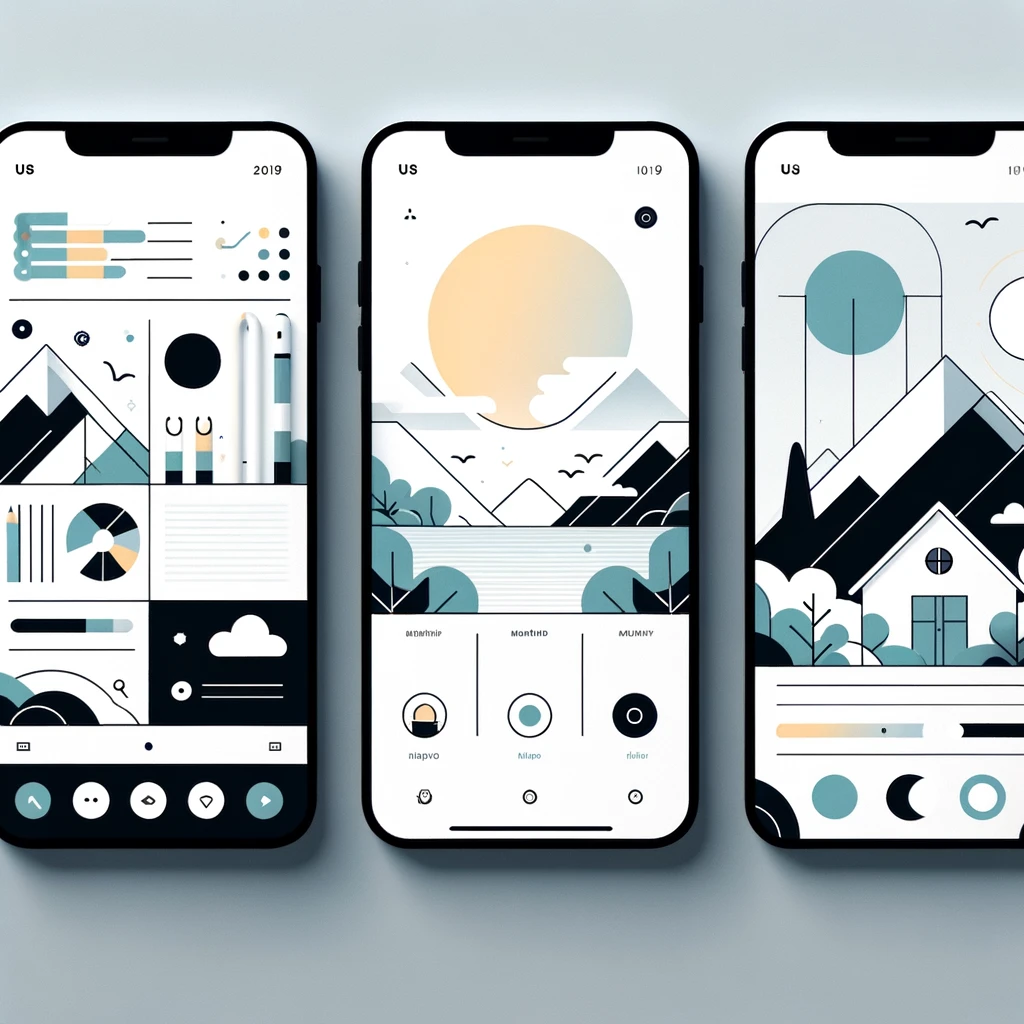Reading time: 6 minutes.
In an era where sustainability is not just a buzzword but a necessity, app developers have a unique opportunity to contribute positively to the environment. The rapid growth of technology has led to increased energy consumption, electronic waste, and carbon footprints. As an app developer, you can adopt practices that not only enhance your application’s efficiency but also minimize its environmental impact. This guide outlines practical steps and strategies to become a sustainable app developer.

Understanding the Impact of Software Development
Before delving into sustainable practices, it’s essential to understand the environmental impact of software development. The energy consumed by data centers, the carbon footprint of maintaining server infrastructure, and the lifecycle of electronic devices are significant contributors to global emissions. According to a 2018 report by Greenpeace, the IT sector consumes approximately 7% of the world’s electricity. By adopting sustainable practices, a sustainable app developer can play a crucial role in reducing this footprint.
1. Energy-Efficient Coding
a. Sustainable App Developers Optimize Algorithms
Efficient algorithms reduce computational load, leading to lower energy consumption. Complex algorithms require more processing power, which translates to higher energy use. By optimizing your code, you can ensure that your app runs smoothly without unnecessary resource consumption.
b. A Sustainable App Developer uses Code Minification and Compression
Minifying and compressing code reduces the size of your app, leading to faster load times and reduced energy usage. Smaller codebases require less processing power and bandwidth, contributing to overall energy efficiency.
c. A Sustainable App Developer Utilizes Lazy Loading
Lazy loading is a design pattern that loads resources only when they are needed. This approach minimizes the initial load time and reduces the amount of data processed, leading to energy savings. Implementing lazy loading for images, scripts, and other resources can make your app more efficient.
2. Efficient Data Management
a. Sustainable App Developers Optimize Data Storage
Storing large amounts of data unnecessarily increases the energy required for data retrieval and storage. Implementing efficient data management practices, such as data compression and indexing, can reduce the energy consumption of your app.
b. Sustainable App Developers Use Cloud Services Wisely
Cloud services offer scalable and efficient data storage solutions. However, they also consume significant energy. Choosing cloud providers committed to renewable energy and optimizing your use of cloud resources can contribute to sustainability. For instance, utilizing serverless architectures can reduce the energy footprint by dynamically allocating resources only when needed.
3. Sustainable Design Principles
a. Sustainable App Developers use Minimalist Design
Minimalist design reduces the computational requirements of your app. By focusing on essential features and avoiding unnecessary elements, you can create a lightweight app that consumes less energy.
b. A Sustainable App Developer offers Dark Mode
Implementing dark mode can reduce the energy consumption of devices with OLED and AMOLED screens. Dark mode uses less power, especially on mobile devices, leading to energy savings for users.

c. Sustainable App Developers use User Experience (UX) Optimization
A well-designed user experience reduces the time users spend navigating your app, leading to lower energy consumption. Intuitive interfaces, efficient navigation, and quick load times enhance UX while contributing to sustainability.
4. Energy-Efficient Testing and Deployment
a. A Sustainable App Developer Employs Automated Testing
Automated testing tools can run tests efficiently, reducing the energy consumption associated with manual testing processes. Continuous integration and continuous deployment (CI/CD) pipelines can optimize the development cycle, ensuring that tests are run only when necessary.
b. Sustainable App Developers use Green Hosting Providers
Choosing hosting providers that use renewable energy or have strong sustainability practices can significantly reduce your app’s carbon footprint. Research hosting options that align with your sustainability goals.
c. Sustainable App Developers Optimize Build Processes
Efficient build processes reduce the energy required for compiling and deploying your app. Tools like Docker can help create lightweight containers, minimizing the resources needed during development and deployment.
5. Reducing Electronic Waste
a. Sustainable App Developers Offer Support for Older Devices
Developing apps that support older devices can extend the lifespan of these devices, reducing electronic waste. By ensuring backward compatibility, you encourage users to keep their devices longer instead of upgrading frequently.
b. A Sustainable App Developer uses Modular Design
Modular design allows for easy updates and component replacements. Instead of requiring users to download the entire app for an update, modular design enables incremental updates, saving bandwidth and reducing the need for new hardware.
6. Promoting Digital Well-being
a. Sustainable App Developers Encourage Responsible Usage
Designing apps that promote responsible usage can help reduce screen time and, consequently, energy consumption. Features like usage tracking, reminders to take breaks, and screen time limits contribute to digital well-being.

b. Sustainable App Developers use Sustainable Marketing
Adopt sustainable marketing practices that focus on quality over quantity. Reducing the frequency of notifications and emails can lower the energy consumption of data transmission and improve the user experience.
7. Collaboration and Community Engagement
a. Sustainable App Developers Engage in Open Source Contributions
Participating in open source projects and sharing your sustainable practices can inspire others in the community. Open source collaboration fosters innovation and helps disseminate energy-efficient techniques.
b. A Sustainable App Developer Engages Communities
Engage with the developer community to promote sustainability. Participate in forums, attend conferences, and share your experiences and knowledge. Community engagement can lead to collective efforts toward more sustainable development practices.
8. Measuring and Monitoring
a. Sustainable App Developers Know Their Energy Consumption Metrics
Implement tools to measure and monitor the energy consumption of your app. Understanding how your app uses energy allows you to identify areas for improvement and track progress over time.
b. A Sustainable App Developer Performs Regular Audits
Conduct regular sustainability audits to ensure that your development practices align with your sustainability goals. Audits can help identify inefficiencies and areas for improvement, keeping your app development process on track.
9. Education and Awareness
a. Sustainable App Developers Stay Informed
Keep yourself updated with the latest trends and advancements in sustainable technology. Follow relevant blogs, attend webinars, and participate in workshops to stay informed about new tools and practices.
b. A Sustainable App Developer Educates Their Team
Promote a culture of sustainability within your development team. Conduct training sessions and share resources to ensure that everyone is aware of and committed to sustainable practices.
10. Long-Term Sustainability Goals
a. A Sustainable App Developer Sets Achievable Targets
Set realistic and achievable sustainability targets for your app development process. Whether it’s reducing energy consumption by a certain percentage or ensuring that all servers are powered by renewable energy, having clear goals can drive your efforts.

b. A Sustainable App Developer Performs Continuous Improvement
Sustainability is an ongoing process. Regularly review and update your practices to incorporate new advancements and techniques. Continuous improvement ensures that your app development remains aligned with the latest sustainability standards.
Conclusion
Becoming a sustainable app developer requires a commitment to energy efficiency, responsible design, and continuous improvement. By implementing the practices outlined in this guide, you can contribute to a more sustainable future while enhancing the performance and user experience of your apps. Remember, every small step counts, and collective efforts can lead to significant positive impacts on the environment. Embrace sustainability as a core value in your development process, and inspire others to join you on this journey toward a greener, more sustainable world.





